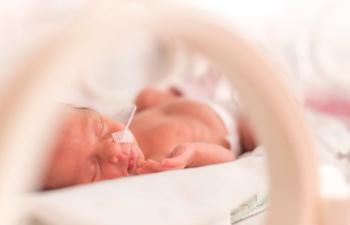
Older maternal age linked to higher pelvic organ prolapse risk
New research highlights that women giving birth at age 30 years or older face significantly increased odds of pelvic organ prolapse.
Older maternal age at delivery is a risk factor for pelvic organ prolapse (POP), according to a recent review published in the American Journal of Obstetrics & Gynecology.1
Maternal age and POP trends
An increase in the average maternal age at first delivery has been observed in the United States, at a record high of 27.4 years in 2022.2 Vaginal delivery (VD) has been linked to increased POP risk, which has a surgical intervention rate of 12.5% to 20% in women.1 Maternal age over 30 at first VD has been linked to POP, but few studies have assessed this link.
“Further, the mechanism explaining the association between maternal age at first delivery and POP remains underexplored,” wrote investigators. Therefore, the review was conducted to evaluate evidence about the relationship between age at first delivery and POP.
Increased surgery risk after 30 years
One study reported increased odds of surgery for POP among women aged at least 30 years at their first VD. Among the 90,465 women included in the analysis, those aged at least 30 years had a risk of 13.9% vs 6.4% among those aged under 30 years.
Investigators also noted an increased protective effect from cesarean delivery (CD) in older mothers. The risk of POP surgery among women aged at least 30 years at first birth was increased 11-fold from VD vs CD. In patients aged under 30 years, this risk was increased 7-fold.
POP risk increasing with each year
When assessing the prevalence of POP symptoms, another study reported a 6% increase in self-reported POP risk for each year of delayed delivery. This rise was observed regardless of delivery method and was also reported when limiting the analysis to women with at least 1 VD.
Research has also indicated an increased risk of anatomic POP from older maternal age at delivery. In the study, the odds of POP were increased by 149% among women aged 30 to 34 years at first maternal delivery vs 24 years or under. In women aged at least 35 years, the risk was increased by 208%.
Another study assessed the risk of POP at 1 year postpartum. At this time, the risk of stage 2 POP or greater was increased by 8% for each additional year of maternal age. This correlation was minimal in women aged under 30.4 years, but significantly increased after this point, indicating this link may not be linear.
Mechanisms of POP also linked
Investigators highlighted a lack of data assessing potential mechanisms of POP outside the acute postpartum period. They suggested additional research to fill this gap may allow for earlier identification of future POP in women.
Of these mechanisms, pelvic floor muscles (PFMs) were highlighted as a potential risk factor, as pelvic structures receive support form PFMs. In a clinical trial, mothers aged at least 30 years had a significantly reduced change in pressure from a PFM contraction in the late pregnancy and immediate postpartum period vs those aged under 30 years.
Older maternal age has also been linked to reduced PFM strength at 6 months postpartum. However, other trials have found no differences in peak PFM strength by age at 14 years after first delivery.
Genital hiatus size and long-term POP risk
Enlarged genital hiatus (GH) has also been reported as a risk factor for POP. One study reported an association between GH enlargement measured 7 to 19 years after delivery and future POP. The rate of POP over time was also increased among participants with a larger GH at enrollment.
When assessing data from this study, researchers found a significantly increased risk from GH among patients aged at least 33 years vs under 33 years at 1 year postpartum. This indicated different patterns of healing past the acute postpartum period.
Implications
These results indicated an association between age at delivery with POP development and mechanisms of POP. Investigators concluded the age at first delivery may impact both the initial pelvic floor injury risk and impaired postpartum recovery.
“It is important that future research account for a number of factors. We need robust data on the effect of age on asymptomatic prolapse (ie, not clinically significant) and the perception of prolapse symptoms in order to improve our understanding of the relationship between maternal age at first delivery and the onset and progression of pelvic support impairment,” wrote investigators.
References
- Zabriskie HA, Drummond MJ, Nygaard IE, Swenson CW. Older maternal age at first delivery as a risk factor for pelvic organ prolapse: what we know. American Journal of Obstetrics & Gynecology. 2025. doi:10.1016/j.ajog.2025.03.006
- Martin JA, Hamilton BE, Sutton PD, Ventura SJ, Menacker F, Munson ML. Births: final data for 2002. National vital statistics reports. 2003;52(10):1-113.
Newsletter
Get the latest clinical updates, case studies, and expert commentary in obstetric and gynecologic care. Sign up now to stay informed.










